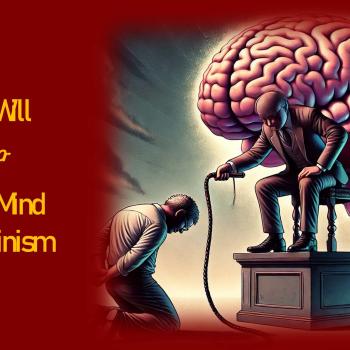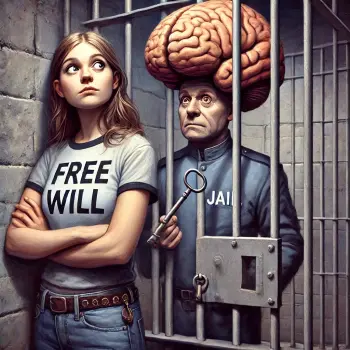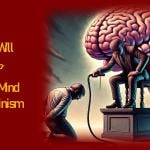 The True Story of Satanic Panic
The True Story of Satanic Panic
ST 2157. Sin 7. Satanic Panic
Is Satan back? Or, perhaps more accurately, is Satanism back? Might we label the 2020’s: Satanic Panic 2.0 ?
In the 2020s, we can find Satan online. The classic Church of Satan, for example, founded in San Francisco by Anton Szandor LaVey (1930-1997), is still remembered online. But, we’ve got updated Satanism too. Might you be in the market for “fast fast sex” from Satanic Online Dating? Netflix offers The Devil All the Time. How about a Petty Lane documentary, Hail Satan? Might Satan Shoes fit your feet? Will Heavy-Metal Music fit your ears? The Satanic Temple has touted religious freedom to campaign for easier access to abortion, exemption from laws that allow administering corporal punishment to school children, and implementing Satanic after-school clubs in elementary schools. And you can see “The Art of Satan” on a northern California highway.
 Alarmists fear a Satanic Panic 2.0. The Satanic Panic of the 1980s is about to repeat itself in the 2020s. Really?
Alarmists fear a Satanic Panic 2.0. The Satanic Panic of the 1980s is about to repeat itself in the 2020s. Really?
Should the public theologian engage in discourse clarification about Satanism in the 1980s and now again in the 2020s? Yes. So, I would like to address the Satanic Panic as part of my Patheos series on sin. This series has so far drawn attention to sin as self-justification, the visible scapegoat, the invisible scapegoat, and the dialectic of sin ‘n’ grace. With this as background, let’s turn to cultural anxieties about Satanism or, more importantly, to Satan himself.
In this column post, I’d like to call to memory the nearly forgotten Satanic Panic of four decades ago. What’s the true story? I’ll try to expand and deepen what has been said recently. In future column posts, I plan to offer some spiritual guidance. I’ll ask: just how should we understand Satan and Satanism? What opens us to demonic possession? What opens us to the Holy Spirit? How might we direct our lives to be holy and caring?
Fear of Satanic Panic 2.0
Can we say yet that the Satanic Panic of the 1980s has arisen from its ignominious grave like a walking Egyptian mummy to terrorize us now in the 2020s? Satan’s soul four decades ago kept itself rejuvenated by swilling the blood of sacrificed infants. On what vampirish diet does this 2020s postmortem Cultus Satanus feed? Conspiracy theories have become the preferred Hord oeuvres at the dining table of the Prince of Darkness.
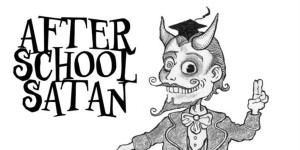 Why might a conspiracy theory nourish Satanic and even anti-Satanic rivalry? Because just believing and pronouncing a conspiracy theory gives us–in our vulnerable moments–an elusive if not delusional sense of power. In our own partially informed if not delusional minds, we draw a line between good and evil. We place ourselves on the good side of that line. We place the partially-hidden yet partially-revealed conspirators on the evil side of that line. We then feel both justified and empowered when we denounce those evil powers.
Why might a conspiracy theory nourish Satanic and even anti-Satanic rivalry? Because just believing and pronouncing a conspiracy theory gives us–in our vulnerable moments–an elusive if not delusional sense of power. In our own partially informed if not delusional minds, we draw a line between good and evil. We place ourselves on the good side of that line. We place the partially-hidden yet partially-revealed conspirators on the evil side of that line. We then feel both justified and empowered when we denounce those evil powers.
“Be gone, thou deep state!”
“Be gone thou Democrats!”
“Be gone thou inferior races!”
“Be gone thou Satanists!”
By denouncing the conspirators, we cast out Satan and his dominions. We are proud anti-Satanists. Right? Well, be very careful here. Due to our blindness to our own sin, this casting out of Satan actually serves Satan. Because Satan is classically manifest as the accuser, your and my accusing others risks conscription into Satan’s own service. Through us, Satan casts out Satan in order to make us his disciples. The debate over Satanism provides Satan himself with an opportunity to enlarge his following.
But, that’s the real Satan. Does Satanism as a new religious movement (NRM) have anything to do with the real Satan? Not much. At least speaking historically. In this column post, let’s remind ourselves of the true history. In future posts, we’ll look at our vulnerability to welcoming Satan into our soul.
Whom do we Blame for Satanism? Satan? Of course not!
In her blog post, “How Conspiracy Theories Echo the Satanic Panic,” Heather Greene connects the 1980s with the 2020s by a double-level bridge. This bridge has evangelical traffic going one way and media going the other.
“Correlations are now being drawn between the 1980s satanic panic and today’s climate. Just as in the 1980s, ultra-conservative politics have re-emerged in reaction to progressive movements. Growing alongside that trend is the birth of a new brand of extremist Christian nationalism, a political ideology that advocates a fusion of American civic life with a particular type of Christian identity and culture….Similar to the 1980s, the media environment is fueling the spread. However, in today’s media world, with its 24-hour news cycles, user-driven social interaction and easily manipulatable content, personal immersion within a conspiracy-laden environment is all-encompassing.” (Greene December 9, 2021)
Fred Clark follows Greene in pointing his finger not toward Satan but rather toward evangelicals and Republicans.
“…millions of white evangelical Americans just so happened to suddenly begin believing that millions of their normal-seeming neighbors were secretly killing babies for Satan at the same time that the Republican Party was rewriting its platform to centralize the criminalization of abortion.”
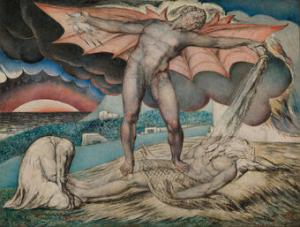 I simply love blaming evangelicals and Republicans and especially the media for everything that goes wrong in our society. To be more precise, I just love blaming per se. [Satan the Accuser Smiting Job by Wm. Blake]
I simply love blaming evangelicals and Republicans and especially the media for everything that goes wrong in our society. To be more precise, I just love blaming per se. [Satan the Accuser Smiting Job by Wm. Blake]
In a Patheos post by Bert Bigelow we find just what a progressive needs to heat up the blaming heart. “Belief in Satan is common in the evangelical/fundamental sects of Christianity. Republicans have harnessed it and use it quite effectively, claiming that the Democratic Party is ‘Satan’s party’, and that liberals in general are influenced by Satan.” As a Democrat I get the added benefit of being a victim. Thanks, Bert.
And all my progressive friends agree on blaming evangelicals, Republicans, Fox News, and similar enemies of the progressive agenda.[1] It’s so comforting to be the member of a club who blames the same people I blame. And if we could blame Satanism–er, ah, I mean blame anti-Satanism–on evangelicals and Republicans! Wow! I could doze as if from a large meal in an ethereal state of self-justificatory self-satisfaction. Right?
But, a confusion arises. Whom do we blame for the Satanic Panic of the 1980s? The Satanists? Or, do we blame the Anti-Satanists? Or , do we blame the Anti-Anti-Satanists? The anti-anti-Satanists ignore Satan and trounce, denounce, and renounce the Anti-Satanists. My head is beginning to spin. Let me ask: might the real Satan have anything to do with Satanism? By avoiding this possible explanation, Satan gets a free pass. Did Satan just hoodwink us?
Here is the question that this column post addresses: might history shed some light on the Satanic Panic? Well, let’s consider a few facts. We’ll have to wander a tad, but please follow me here. My history will be illuminating. Will it also provide and explanation of Satanic Panic? Let’s see.
Hypnotic Regression in UFO Experiences
What does Satanism have to do with UFOs? Yeow! Well, just watch. And, be patient.
 One night in 1961 Betty and Barney Hill experienced lost time. They lost this time while driving a deserted highway. Later, Boston psychiatrist Benjamin Simon subjected Betty and Barney separately to hypnotic regression. Under a hypnotic state Dr. Simon and the rest of us learned that these two New Hampshirites had been abducted by extraterrestrials and taken aboard a UFO. Both Betty and Barney were given an invasive physical examination by the aliens. After showing Betty a star map that she would later reproduce for investigation, ufological researchers concluded that the space visitors had come from a planet orbiting Zeta 2 Riticuli. This planet would be 29 lightyears distant from Earth. The retrieval of this forgotten memory through hypnotic regression made headlines, including extensive coverage in Astronomy Magazine.
One night in 1961 Betty and Barney Hill experienced lost time. They lost this time while driving a deserted highway. Later, Boston psychiatrist Benjamin Simon subjected Betty and Barney separately to hypnotic regression. Under a hypnotic state Dr. Simon and the rest of us learned that these two New Hampshirites had been abducted by extraterrestrials and taken aboard a UFO. Both Betty and Barney were given an invasive physical examination by the aliens. After showing Betty a star map that she would later reproduce for investigation, ufological researchers concluded that the space visitors had come from a planet orbiting Zeta 2 Riticuli. This planet would be 29 lightyears distant from Earth. The retrieval of this forgotten memory through hypnotic regression made headlines, including extensive coverage in Astronomy Magazine.
Benjamin Simon felt he could not render an empirical judgment. Most certainly Betty and Barney believed firmly in what they had reported, observed the psychiatrist. Yet, Dr. Simon could not provide independent verification of the UFO incident. So, the psychiatrist concluded that the Hill couple experienced a folie a deux, a shared delusion. Years later a winery in Napa Valley was founded and named for this UFO case and, though sold and bought by new owners, maintains this classic name, Folie a Deux.
Hypnotic Regression for Sexual Abuse and Satanic Ritual Abuse
What is important for the next chapter in our story is not the UFO part. No. Rather, it’s the method of hypnotic regression used to retrieve forgotten memories. A decade after Benjamin Simon’s treatment of Betty and Barny Hill, hypnotic regression was used by psychiatrist Lawrence Pazder and reported in his best-selling book of 1980 (hardback) and 1981 (paperback), Michelle Remembers. Memory-recovery therapy revealed that, in her youth, Michelle Smith was subjected to lurid practices of Satanic ritual abuse.
Satanic ritual abuse? Really? The book along with book promotion radio shows stated that little Michelle was abused by the Church of Satan. Note in passing that this sort of classic Satanic practice predated the founding of Anton LaVey’s San Francisco Church of Satan in 1966. The ritual abuse of little Michelle began in 1954. She was five years old. She was tortured, locked in a cage, and sexually assaulted. She witnessed numerous human sacrifices. Following a sacrifice, Michelle would be rubbed with blood and the body parts of the victims.
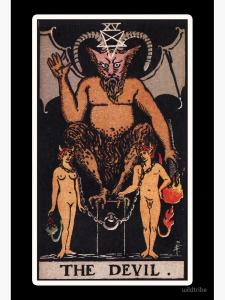 Later Michelle underwent a final ritual. It was an 81-day ritual in 1955. In this climactic moment Satan himself appeared. In addition, Jesus along with the Virgin Mary and Michael the Archangel also appeared, The latter holy ones removed the scars received by Michelle throughout the year of abuse. In addition, they blocked memories of the events until the time would be right to reveal them. Doctor Pazder’s hypnotic regression mediated the revelation of forgotten memories.
Later Michelle underwent a final ritual. It was an 81-day ritual in 1955. In this climactic moment Satan himself appeared. In addition, Jesus along with the Virgin Mary and Michael the Archangel also appeared, The latter holy ones removed the scars received by Michelle throughout the year of abuse. In addition, they blocked memories of the events until the time would be right to reveal them. Doctor Pazder’s hypnotic regression mediated the revelation of forgotten memories.
This book and its promotion set off a firestorm of hysteria that took nearly a decade and a half to dowse out with cool reason. Therapists around the country put “Memory-Recovery Therapy” on their shingles. Grown women would retrieve through hypnotic regression memories of their being victimized by their fathers at an early age. Husband-fathers all over America suddenly found themselves in defendant chairs of courtrooms.
The main target of conspiracy theorists became preschools. The longest and most expensive trial ever prosecuted by the Los Angeles District Attorney, Ira Reiner, dealt with Satanic ritual abuse in a preschool. In 1983, hypnotic regression revealed a basement under the McMartin Preschool that did not have a basement. In this fictional basement, Peggy McMartin Bucky and Ray Bucky had conducted Satanic and sexual rituals that constituted abuse of the children in their care. Well, that’s what they were accused of. The evidence for these accusations came from memory-recovery therapy of the type used in the Betty and Barney Hill UFO case. It was not until 1990 that Peggy McMartin Bucky was acquitted. A second trial for Ray Bucky ended in a hung jury.
The credibility of memory-retrieval therapy through hypnotic regression was put under scrutiny. By playing videos of therapeutic sessions in court, it became obvious that the therapists were manipulating their clients. The gruesome memories of lurid abuse were actually implanted by the therapists, not retrieved from the children.
The seven year McMartin Preschool circus was only one of many courtroom spectacles. This nail-biting and hand-wringing drama repeated itself in cities and towns across the country for almost a decade. Hence the appellation, Satanic Panic.
Hypnotic Regression in UFO Experiences Redivivus
Regardless of the McMartin trial results, memory-recovery therapy became widely discredited in cases of Satanic ritual abuse and sexual abuse. Memory-recovery hypnosis did not just go away, however. It lived on in the ufology community. Perhaps the apogee was the 1993 publication of Abduction — as the title suggests, collection of cases of persons abducted by UFOs whose memories had been retrieved through hypnosis — by John Mack (1929-2004), a professor of psychiatry at Harvard Medical School. His legacy is the John Mack Institute.
Those are the facts. As an aside, I liked John Mack. I felt he was as scientific as sincere about his UFO abduction research. Let’s get back to the main story.
Satanism, Anti-Satanism, and Anti-Anti-Satanism
The retrieval of forgotten memories lit a match. No one could predict that the evangelical vapor hovering over the culture like gasoline fumes would ignite. Swept up into the firestorm were families with working mothers and children in child-care or preschool.
Both fueling the flames as well as fanning the flames were three distinct groups of fire-fighters: the Satanists, the Anti-Satanists, and the Anti-Anti-Satanists. Do the 2020s look like the 1980s? We will see.
First, the Satanists.
Who are today’s Satanists? Here’s what the U.S. Department of Justice says.
“Satanism has a variety of connotations: the renunciation and denial of a Christian God, the ascendence of evil over good, the forces of darkness, the use of ritual evocations of demons in rooms lit only by black candles, and sacrifices and sexual orgies. Satanic religions are as old as monotheism and have their origins in Persia of the sixth century. However, Satanism is not a worldwide conspiracy. Instead, like other occult and magical belief systems, it is a response to social tensions and has emerged during time social fragmentation. The vast majority of Satanists belong to the neo-Satanic churches and represent no threat to society.”
To expand this slightly, let’s distinguish between public Satanic groups [today it’s the Satanic Temple] and clandestine Satanic sects. J. Gordon Melton, perhaps America’s most erudite scholar of new religious movements, drew a sharp line between groups with names in phonebooks and the more isolated ephemeral cults. The former are harmless and pose no public threat. The smaller secret groups, however, are sometimes led by psychopaths and sociopaths. “While they [secret Satanic sects] pose no threat to the larger society, they do pose an immediate danger to those involved in them and are frequently involved in criminal activity, from dealing in drugs to rape and murder” (Melton March 28, 1986).
During the Satanic Panic of the 1980s, I myself conducted considerable research. I consulted with publishers on books in the genre. I actually interviewed practicing Satanists of both the public and sect types. Yes, they did exist. And, perhaps even today you’ve got a neighbor who’s a secret Satanist. The net impact on the wider society by Satanic practice is minimal perhaps, yet the urban legend is not without foundation.
 I published my research on Satanism in both non-fiction and fictional forms. The non-fictional account appears in my 1993 book, Sin—Radical Evil in Soul and Society. Garden variety or everyday sinning, I claimed, involves violence we perpetrate toward other persons, animals, or the natural world. We justify this violence by thinking of ourselves as just, right, and good. This cover-up I call, “self-justification.”
I published my research on Satanism in both non-fiction and fictional forms. The non-fictional account appears in my 1993 book, Sin—Radical Evil in Soul and Society. Garden variety or everyday sinning, I claimed, involves violence we perpetrate toward other persons, animals, or the natural world. We justify this violence by thinking of ourselves as just, right, and good. This cover-up I call, “self-justification.”
Radical evil is rare. What distinguishes radical evil is the pursuit of evil in the name of evil. Sometimes this applies to Satanists, who declare they will do evil in the name of Satan. Curiously, most Satanists are like all the rest of us. They claim to do good in the name of the good, whether it’s evil or not.
In my fictional treatment, The Moon Turns to Blood, a Cultus Satanus performs ritual abuse while pursuing what everyone most passionately covets, namely, power. Satanism looks kinda like everyday sinning, just elevated to a higher level of symbolism.
 Did the Satanic Panic of the 1980s respond fittingly to a genuine threat? It is my considered judgment that it did not. The lurid visions of baby-killing and child-abusing Satanists in robes chanting around a sacrificial altar was largely—though not totally—fabricated to sell books and keep evangelical church life exciting.
Did the Satanic Panic of the 1980s respond fittingly to a genuine threat? It is my considered judgment that it did not. The lurid visions of baby-killing and child-abusing Satanists in robes chanting around a sacrificial altar was largely—though not totally—fabricated to sell books and keep evangelical church life exciting.
Second, the Anti-Satanists.
Where do we find the anti-Satanists? Anti-Satanists nest and nurse in two locations, the offices of therapists and the bookstores of the evangelicals. During this period, I would browse Christian bookstores. Therein I would find multiple shelves of books on Satanism. Maybe more on this topic than on prayer.
The main theme of these books was so embarrassing as to make me wish I’d never studied this matter. But, here it is. Numerous evangelical authors thought that if they could convince the public that Satan exists, then the public would become more receptive to the message that God exists. It appears to me, that these overzealous evangelical evangelists were willing to sell their soul to an urban legend as a means to a holy end. I wept.
In 1992, Christian evangelist Michael Warnke was exposed. He had invented stories about his own past that included Satanism. It was a lie. In the account of his life in his book, The Satan Seller, Warnke reported he had converted from Satanism and gave his life to Christ. It was a lie. Might this be worth weeping over?[2]
Here is the biblical spirit the defenders of Holy Scripture may have overlooked.
Always be ready to make your defense to anyone who demands from you an account of the hope that is in you; yet do it with gentleness and reverence. Keep your conscience clear, so that, when you are maligned, those who abuse you for your good conduct in Christ may be put to shame. (1 Peter 3:15b-16)
Satan does not weep. Satan laughs uproariously all the way to the bank after having tricked Christ’s faithful disciples into practicing deceit, false witness, and maleficence.
Third, the Anti-Anti-Satanists.
Where do we find the anti-anti-Satanists? We find them among the New Religious Movements (NRM) scholars. The anti-anti-Satanists grieve over the reputations and careers lost by charges of ritual and sexual abuse. Innocent pre-school teachers and husband-fathers have been subjected to humiliation, job loss, communal judgment, and threats of imprisonment. All because of hysteria drummed up by an urban legend.
Why this particular hysteria over Satanic ritual abuse? Why were pre-schools and husband-fathers attacked so viciously by society? Can we actually blame the UFO investigators? The evangelicals? Pro-life politics? Or the Republicans?
The NRM scholars proposed a most delicate yet fascinating theory to explain the Satanic Panic. Without blaming anybody, NRM scholars noted how the Satanic Panic rode the horse of rising professionalism among women. After the women’s liberation movement of the 1960s and feminist theology in the 1970s, educated women began to think they could “have it all.” This meant both a family and a profession. Professional women hired out child-care services.
This led to an unarticulated moral schizophrenia. On the one hand, a professional woman should be proud of her accomplishments in the workplace. On the other hand, at the anima level, the professional woman felt guilt at not being home to nurture her children. A reaction-formation set in. Blame for this guilt became projected toward the teachers and child-care workers. Here is Robert Ellwood, a leading NRM scholar.
“It is now almost universally believed that the Satanic panic was spurious, despite its promotion by certain wings of resurgent evangelical Christianity….This was nearly the first generation of families in which both husband and wife typically went out to work, perforce leaving young children in daycare centers and preschools. Deep concerns as to whether this was right, and what kind of care their precious young ones would have from surrogate parents, may have been projected into satanic fantasies” (Ellwood Fall 2009, 7).
Let me try to grasp this hypothesis. The number of women working outside the home increased from 39 percent in 1970 to 56 percent in 1988. This brought about a significant increase in child-care providers and preschools. Families felt a vulnerability to outside forces more intensely than previously. This new family situation saw a rise in anxiety. Both individual and social anxiety. Anxiety, as I’ve pointed out here in this Patheos series, is the garden within which sin sprouts and blossoms. Might anti-Satanism be a form of social self-justification combined with scapegoating?
The anti-Satanism movement provided a countersubversion ideology to anxious families. Anti-Satanism, according to Anti-Anti-Satanist David Bromley, both exacerbated and alleviated this anxiety. Rather than blaming inappropriate parental conduct, the problems facing families could now be projected onto malevolent outsiders (Bromley 1991).
Lest I myself serve Satan by casting out Satan, I must consider this NRM theory as at least a partial explanation for the Satanic Panic of the 1980s. What do you think?
Conclusion
The tragedy of the Satanic Panic of the 1980s is that adults were scapegoated on the basis of children’s testimony garnered via hypnotic regression. A grave injustice swept Canada and the U.S. Theologian Roger Olson gives us cause to weep.
“I was skeptical about many of the children’s stories from the time I first heard them reported in the news….Anyone who remembers the Satanic Panic of the 1980s must remember that many, many children reported being abused at day care centers and even at home. Many adults were convicted and sent to prison. Then, many of the children’s stories were reported publicly and they were simply unbelievable. What they reported to police and social workers under intense questioning simply could not have happened. Then, worst of all, as they got older, most of them retracted their stories, especially of what they had reported about abuse they suffered in day care centers. But the owners of those day care centers, in both Canada and the USA when through hell because people chose to believe the children’s simply outlandish stories.”
Despite the phony Satanic Panic, we still need to say something theologically about Satan. Here is the first and most important thing you need to know when taking up this subject matter: Satan is present when you hear the call to shed innocent blood (Peters, Sin: Radical Evil in Soul and Society 1993, 257). By retrieving this history with a critical eye, we are asking: whose innocent blood was shed? The blood of babies sacrificed on Satanic altars? Probably not. Rather, figuratively speaking, the innocent victims were child-care givers, school teachers, and husband-fathers.
Retrieving the Satanic Panic history is valuable in at least two ways. First, because what happened is so poorly remembered let alone understood, we need to reassess it. Retrieving some relevant facts might keep our judgments cool. As Gabriel blows his trumpet to announce Satanic Panic 2.0, the town criers may quickly shout, “Fire!” They may begin to blame their favorite scapegoats. Once scapegoating has filled the atmosphere with the smoke of accusations and counteraccusations, the true Satan will feel welcome to enter the fray and stir up more confusion among us.
Second, the public theologian should feel obligated to provide a theology of Satan and Satanism. A theological interpretation that is useful to both believers and non-believers. A theological interpretation that is true to Holy Scripture, rationally articulated, and aimed at honoring the common good. We will attempt this in the column posts to come.
——————–
[1] Please pardon my sarcasm. I happen to love evangelical Christians and the evangelism mission. It grieves me to see the self-destruction of the evangelical spirit taking place before our very eyes. Please do not confuse my joking with the points I’m trying to make.[2] I certainly weep over new revelations regarding the 1972 interchange between Billy Graham and then President Richard Nixon. Discussion of the “Synagogue of Satan” betrays an underlying anti-Semitism. I had been aware that Nixon was a bigot, to be sure. But, it is gravely disappointing to learn this about Graham.
▓
 Ted Peters directs traffic at the intersection of science, religion, and ethics. Peters is a professor at the Graduate Theological Union (GTU), where he co-edits the journal, Theology and Science, on behalf of the Center for Theology and the Natural Sciences (CTNS), in Berkeley, California, USA. He is author of Playing God? Genetic Determinism and Human Freedom (Routledge, 2nd ed., 2002) and editor of AI and IA: Utopia or Extinction? (ATF 2019). Watch for his forthcoming volume with ATF, The Voice of Christian Public Theology.
Ted Peters directs traffic at the intersection of science, religion, and ethics. Peters is a professor at the Graduate Theological Union (GTU), where he co-edits the journal, Theology and Science, on behalf of the Center for Theology and the Natural Sciences (CTNS), in Berkeley, California, USA. He is author of Playing God? Genetic Determinism and Human Freedom (Routledge, 2nd ed., 2002) and editor of AI and IA: Utopia or Extinction? (ATF 2019). Watch for his forthcoming volume with ATF, The Voice of Christian Public Theology.
Ted Peters also writes fictional thrillers. The protagonist is a Chicago pastor, Leona Foxx. In The Moon Turns to Blood, Leona confronts a Satanic cult bent on world domination.
Visit his website: TedsTimelyTake.com.
▓
Bibliography
Bromley, David. 1991. Satanism: The New Cult Scare. Presentation, Santa Barbara CA: Institute for the Study of American Religion: Fifth Annual International Conference on New Religions .
Clark, Fred. January 22 2022. “The Satanic Panic of the 20s.” Patheos Slacktivist https://www.patheos.com/blogs/slacktivist/2022/01/27/the-satanic-panic-of-the-20s/.
Ellwood, Robert, 2009. “The Mythology of Evil.” Criterion 47:2 (Fall) 2-11.
Greene, Heather. December 9, 2021. “How Conspiracy Theories Echo the Satanic Panic.” Religion Unplugged https://religionunplugged.com/news/2021/12/9/how-todays-conspiracy-theories-echo-the-satanic-panic.
Melton, J Gordon. March 28, 1986. The Evidences of Satan in Contemporary America: A Survey. Scholarly Presentation, Los Angeles CA: Pacific Division of the American Philosophical Association.
Peters, Ted. 2015. Sin Boldly! Minneapolis MN: Fortress Press.
—. 1993. Sin: Radical Evil in Soul and Society. Grand Rapids MI: Wm B Eerdmans.
—. 2019. The Moon Turns to Blood. Berkeley CA: Apocryphile.




